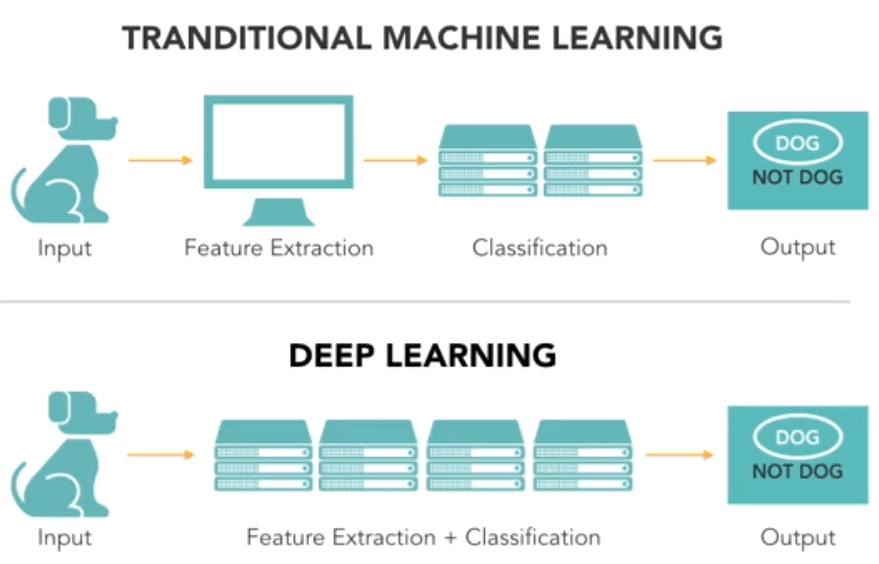
In this article, we will discuss Recurrent Neural Networks, Feed-forward neural networks, Long-term memory (LSTM) networks, and Training feed-forward neural network. Learn about the advantages of neural networks as well as the training methods that are used to create them. We will also learn how these neural networks work in real-world scenarios and how artificial intelligence is applied to them. What's the benefit to using a neural net for artificial Intelligence?
Recurrent Neural Networks
Recurrent neural network are very useful in many fields. Recurrent neural networks work differently to feedforward neural network, which differ in the weights of nodes. Instead, they use the exact same weight parameter across all layers for predictions. Recurrent networks can take inputs of any length and make predictions within a time limit. Recurrent networks also allow for hidden states. As a result, they are more efficient at recognizing faces and learning idioms.

Feed-forward neural networks
A feed-forward neural network is an artificial neural network. It uses a learning algorithm to compare inputs and predict a specific outcome. The input weights have a relationship to one another and they are initialized at small, random values. These are usually between 0-1. One of the most common uses for feed-forward neural systems is object detection using photos. The basic principles behind this kind of network are explained below.
Networks of long-term memory networks (LSTM).
An LSTM network, a neural network that has information beyond the normal flow of a recurrent one, is called a LSTM network. The information is stored in a gated cell and can be read from it at a later time. The gates decide the storage, reading, and erasure. The cells are implemented by element-wise multiplication using sigmoids. This makes it different from digital storage.
Training feed-forward neural networks
Feed forward neural networks are trained by feeding inputs into the system and computing the attributes to each sample. Feed-forward neural networks are not like other types of neural network. They do not require input data. They are therefore useful in classification tasks. Gradient descent is a method that allows a network to be trained repeatedly by feeding it pairs of inputs and outputs.
LSTM networks
LSTM, a type recurrent neuro network, can work with long sequences. Although LSTM networks can be set up faster than rnns (which is why they take longer to do so). You need to be familiar with LSTMs and their workings in order to use them. We will be discussing how these networks function and how they differ from the rnns in this article.

Gated recurrent unit (GRUs),
GRU is a recurrent element that combines two types information to solve a problem. It is composed of two gates, an update gate (zt), and a reset gateway (rt). The update gateway determines what information is allowed to be sent into its output, and the reset gateway controls how the input interacts with it. The process is very similar in nature to the basic neural network. However, GRUs are designed for independent operation.
FAQ
Who is leading today's AI market
Artificial Intelligence, also known as computer science, is the study of creating intelligent machines capable to perform tasks that normally require human intelligence.
There are many types today of artificial Intelligence technologies. They include neural networks, expert, machine learning, evolutionary computing. Fuzzy logic, fuzzy logic. Rule-based and case-based reasoning. Knowledge representation. Ontology engineering.
There has been much debate over whether AI can understand human thoughts. However, recent advancements in deep learning have made it possible to create programs that can perform specific tasks very well.
Google's DeepMind unit has become one of the most important developers of AI software. Demis Hashibis, the former head at University College London's neuroscience department, established it in 2010. In 2014, DeepMind created AlphaGo, a program designed to play Go against a top professional player.
Why is AI important
According to estimates, the number of connected devices will reach trillions within 30 years. These devices will include everything from cars to fridges. Internet of Things (IoT), which is the result of the interaction of billions of devices and internet, is what it all looks like. IoT devices are expected to communicate with each others and share data. They will also make decisions for themselves. Based on past consumption patterns, a fridge could decide whether to order milk.
According to some estimates, there will be 50 million IoT devices by 2025. This is a tremendous opportunity for businesses. But it raises many questions about privacy and security.
What is the latest AI invention
Deep Learning is the latest AI invention. Deep learning is an artificial intelligent technique that uses neural networking (a type if machine learning) to perform tasks like speech recognition, image recognition and translation as well as natural language processing. Google developed it in 2012.
The most recent example of deep learning was when Google used it to create a computer program capable of writing its own code. This was done using a neural network called "Google Brain," which was trained on a massive amount of data from YouTube videos.
This allowed the system's ability to write programs by itself.
IBM announced in 2015 that it had developed a program for creating music. The neural networks also play a role in music creation. These are known as "neural networks for music" or NN-FM.
How does AI work?
An artificial neural system is composed of many simple processors, called neurons. Each neuron receives inputs and then processes them using mathematical operations.
Neurons can be arranged in layers. Each layer has a unique function. The first layer gets raw data such as images, sounds, etc. These are then passed on to the next layer which further processes them. The last layer finally produces an output.
Each neuron has an associated weighting value. This value is multiplied each time new input arrives to add it to the weighted total of all previous values. If the result is more than zero, the neuron fires. It sends a signal to the next neuron telling them what to do.
This cycle continues until the network ends, at which point the final results can be produced.
How does AI work
An algorithm is a sequence of instructions that instructs a computer to solve a problem. An algorithm is a set of steps. Each step has a condition that determines when it should execute. Each instruction is executed sequentially by the computer until all conditions have been met. This process repeats until the final result is achieved.
Let's say, for instance, you want to find 5. If you wanted to find the square root of 5, you could write down every number from 1 through 10. Then calculate the square root and take the average. That's not really practical, though, so instead, you could write down the following formula:
sqrt(x) x^0.5
This says to square the input, divide it by 2, then multiply by 0.5.
A computer follows this same principle. The computer takes your input and squares it. Next, it multiplies it by 2, multiplies it by 0.5, adds 1, subtracts 1 and finally outputs the answer.
AI: What is it used for?
Artificial intelligence is a branch of computer science that simulates intelligent behavior for practical applications, such as robotics and natural language processing.
AI is also called machine learning. Machine learning is the study on how machines learn from their environment without any explicitly programmed rules.
AI is being used for two main reasons:
-
To make our lives simpler.
-
To be able to do things better than ourselves.
Self-driving car is an example of this. AI can replace the need for a driver.
AI: Good or bad?
AI can be viewed both positively and negatively. It allows us to accomplish things more quickly than ever before, which is a positive aspect. It is no longer necessary to spend hours creating programs that do tasks like word processing or spreadsheets. Instead, we can ask our computers to perform these functions.
People fear that AI may replace humans. Many believe robots will one day surpass their creators in intelligence. This means they could take over jobs.
Statistics
- More than 70 percent of users claim they book trips on their phones, review travel tips, and research local landmarks and restaurants. (builtin.com)
- By using BrainBox AI, commercial buildings can reduce total energy costs by 25% and improves occupant comfort by 60%. (analyticsinsight.net)
- In 2019, AI adoption among large companies increased by 47% compared to 2018, according to the latest Artificial IntelligenceIndex report. (marsner.com)
- In the first half of 2017, the company discovered and banned 300,000 terrorist-linked accounts, 95 percent of which were found by non-human, artificially intelligent machines. (builtin.com)
- According to the company's website, more than 800 financial firms use AlphaSense, including some Fortune 500 corporations. (builtin.com)
External Links
How To
How to set Alexa up to speak when charging
Alexa, Amazon's virtual assistant, can answer questions, provide information, play music, control smart-home devices, and more. You can even have Alexa hear you in bed, without ever having to pick your phone up!
You can ask Alexa anything. Just say "Alexa", followed by a question. Alexa will respond instantly with clear, understandable spoken answers. Alexa will also learn and improve over time, which means you'll be able to ask new questions and receive different answers every single time.
Other connected devices can be controlled as well, including lights, thermostats and locks.
Alexa can be asked to dim the lights, change the temperature, turn on the music, and even play your favorite song.
Setting up Alexa to Talk While Charging
-
Open Alexa App. Tap Settings.
-
Tap Advanced settings.
-
Select Speech Recognition
-
Select Yes, always listen.
-
Select Yes, please only use the wake word
-
Select Yes, and use the microphone.
-
Select No, do not use a mic.
-
Step 2. Set Up Your Voice Profile.
-
You can choose a name to represent your voice and then add a description.
-
Step 3. Test Your Setup.
After saying "Alexa", follow it up with a command.
You can use this example to show your appreciation: "Alexa! Good morning!"
If Alexa understands your request, she will reply. Example: "Good Morning, John Smith."
Alexa will not reply if she doesn’t understand your request.
After these modifications are made, you can restart the device if required.
Notice: If you have changed the speech recognition language you will need to restart it again.